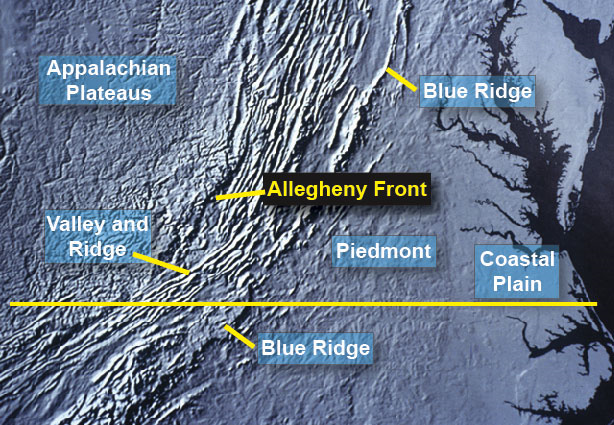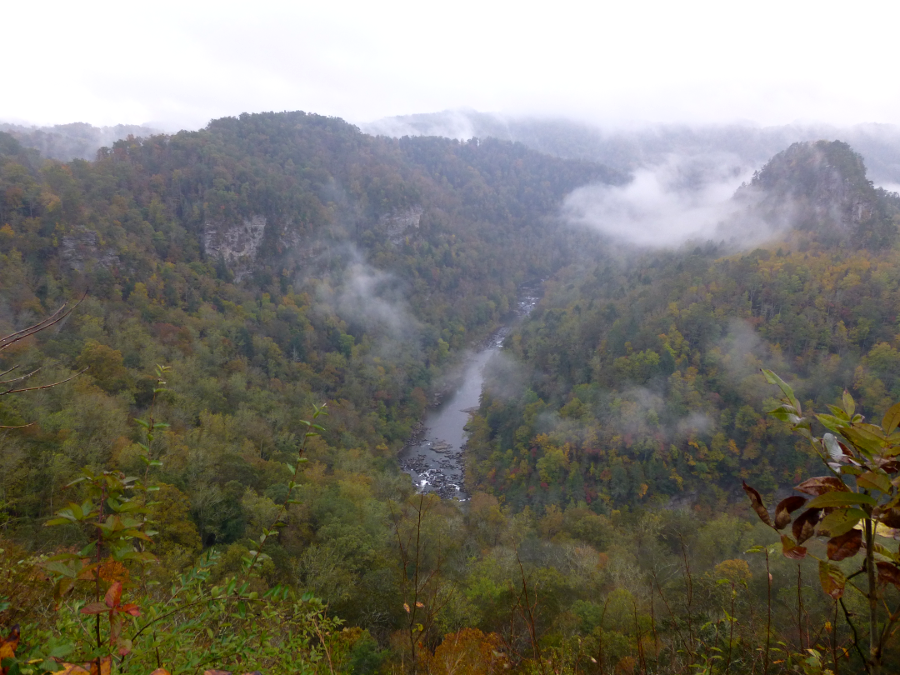
Appalachian Plateaus province
Source: Radford University, Appalachian Plateaus Physiography

Appalachian Plateaus province
Source: Radford University, Appalachian Plateaus Physiography
The Appalachian Plateau was far from the collision with Africa 300 million years ago. That tectonic collision, which assembled the last pieces of Pangea, pushed up a mountain range and pushed rocks down as well. The roots of that mountain range are still exposed in granite quarries at the Fall Line along I-95, demonstrating that the ancestral Appalachian Mountains were far east of the cultural region known today as "Appalachia."
The Alleghanian Orogeny also folded and broke the sedimentary layers that had formed from erosion after the Taconic and Acadian orogenies. Those tilted layers are in what today we call the Valley and Ridge Province. The collision also broke off a chunk of the Grenville-age basement rock and shoved the Blue Ridge perhaps 40 miles to the west.
However, the energy of that collision was dissipated before reaching the Appalachian Plateau. The sediments there are flat. The ede of the flat Appalachian Plateau and the tilted Valley and Ridge province is called the Allegheny Front.
There are hills and valleys in the Appalachian Plateau; check out Breaks Interstate Park on the Virginia-Kentucky boundary someday. The topographic relief in the Appalachian Plateau was created by streams gouging out their valleys.
The topographic relief in the Valley and Ridge resulted first from tectonic plates shoving diffferent layers of sediment sideways and tilting those layers. Differential erosion later carved out valleys in the softer limestones, while harder sandstone layers formed ridges.

the Russell Fork at what is now Breaks Interstate Park has etched out a scenic valley in the sediments of the Appalachian Plateau